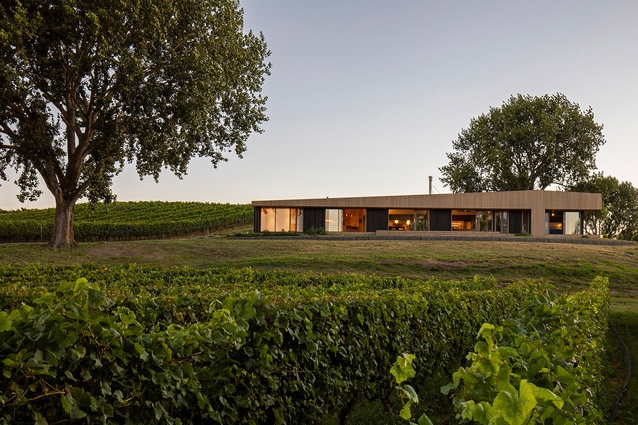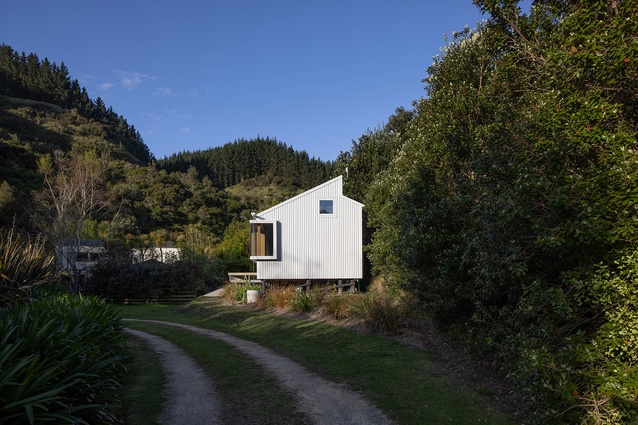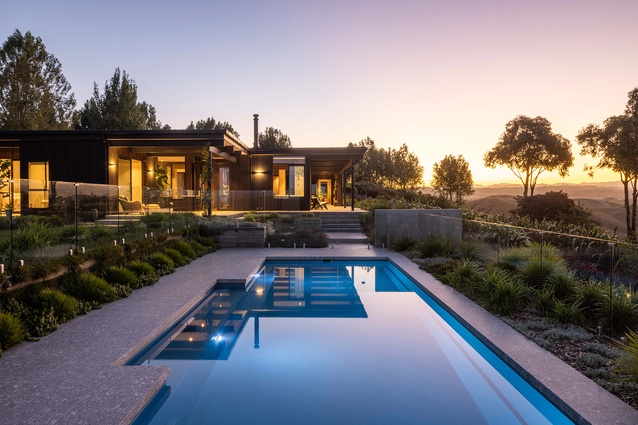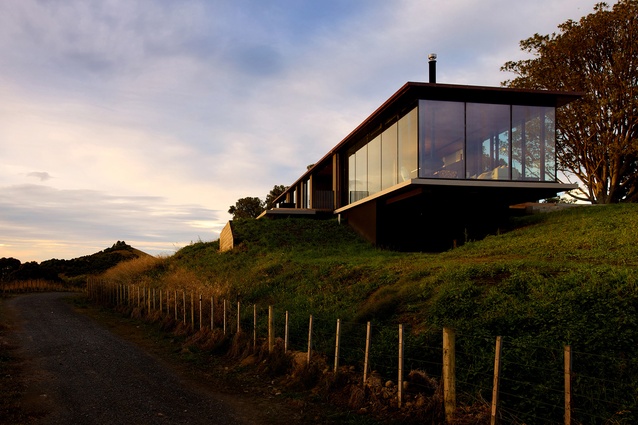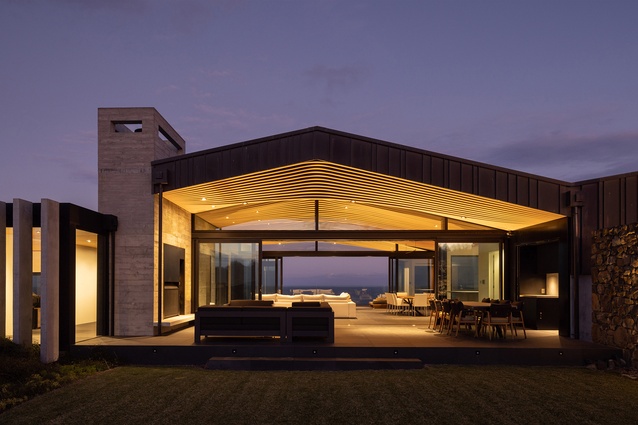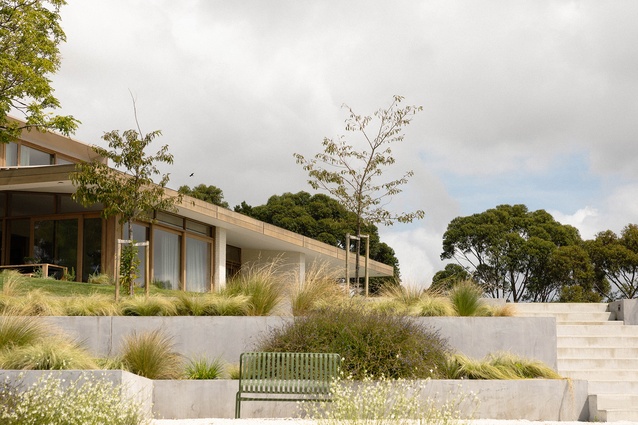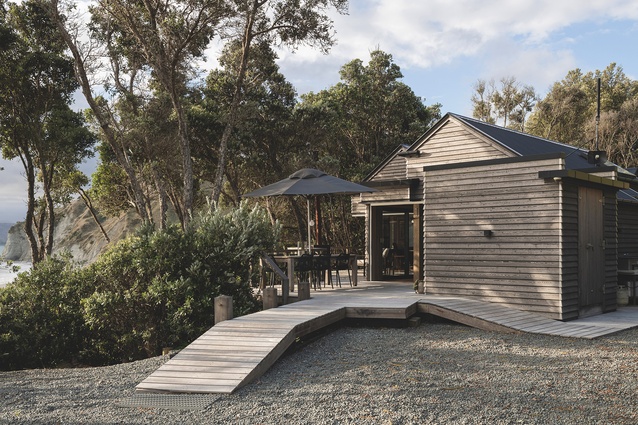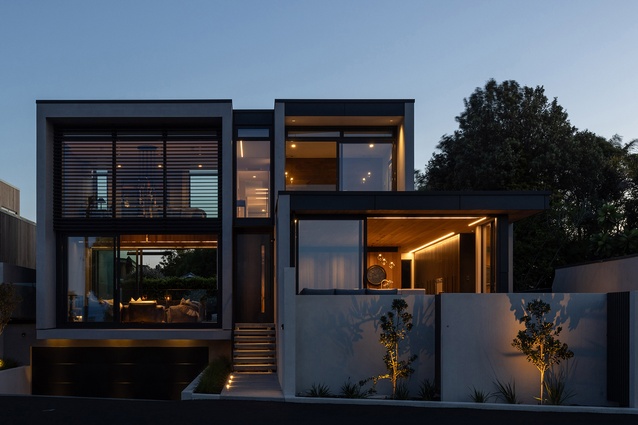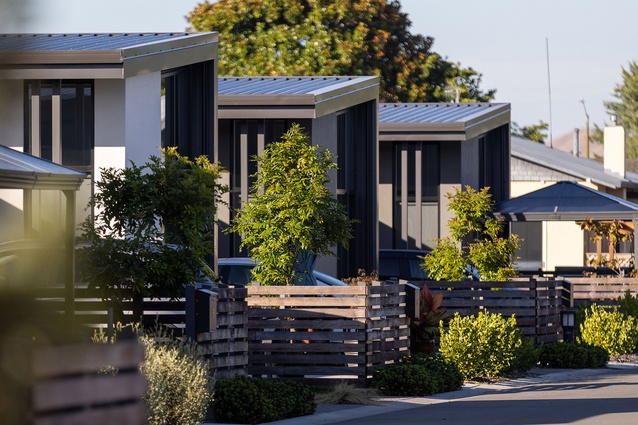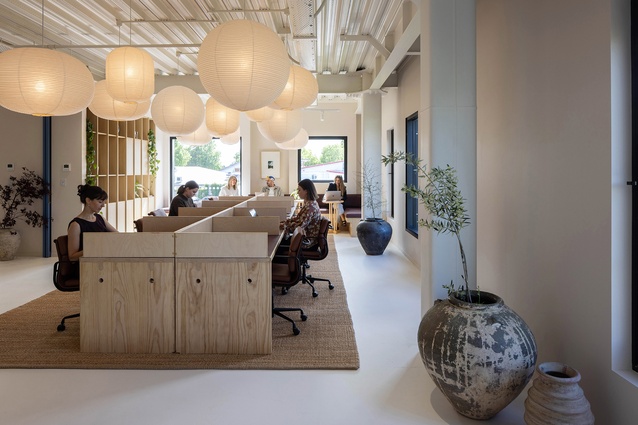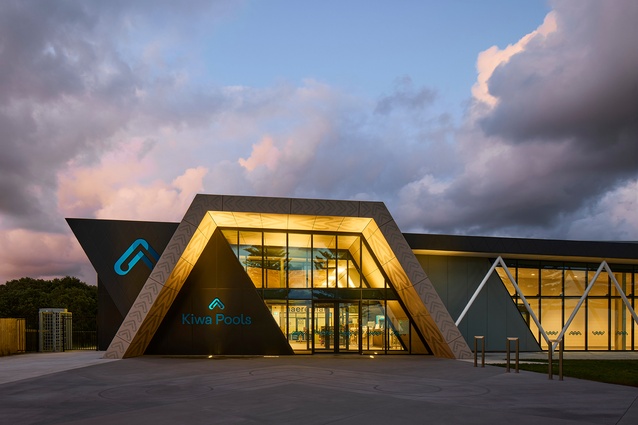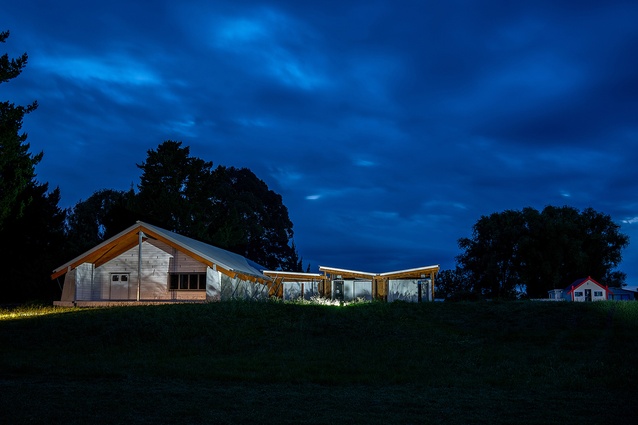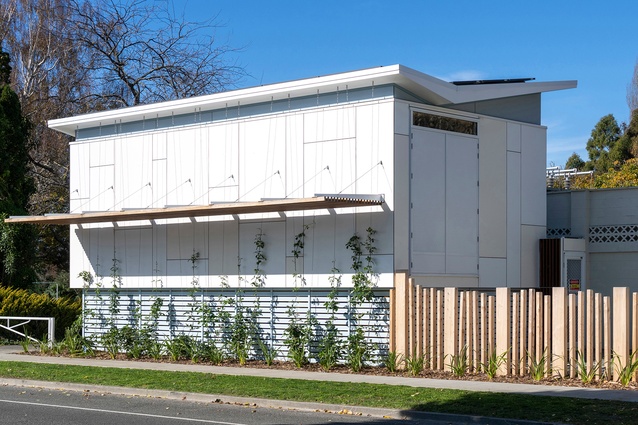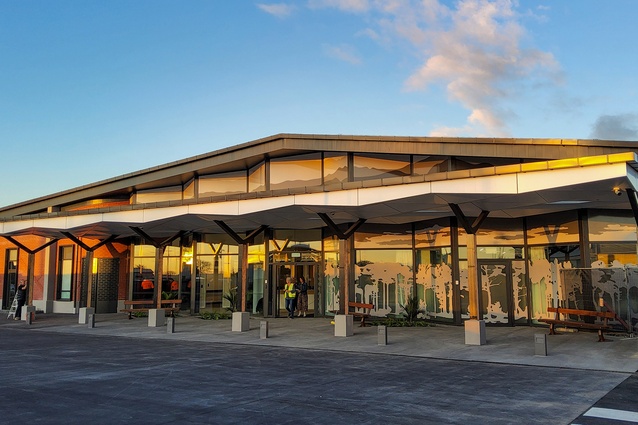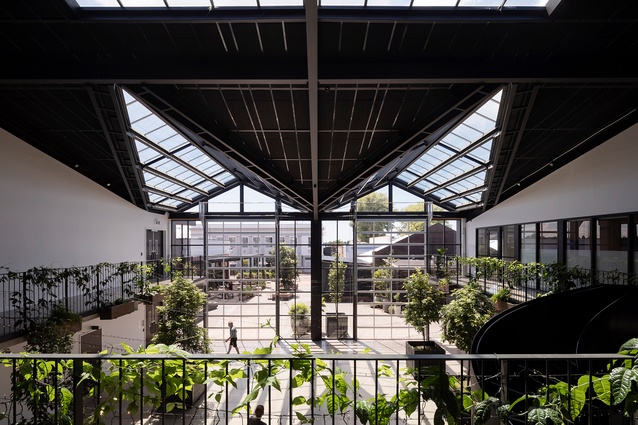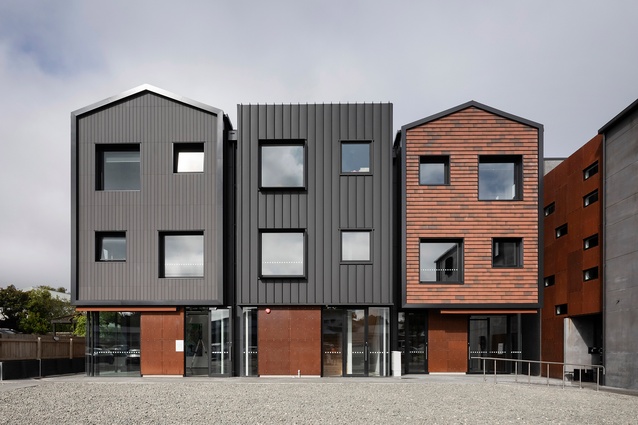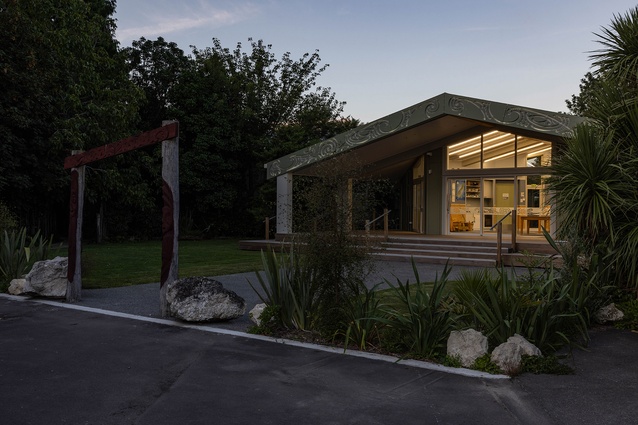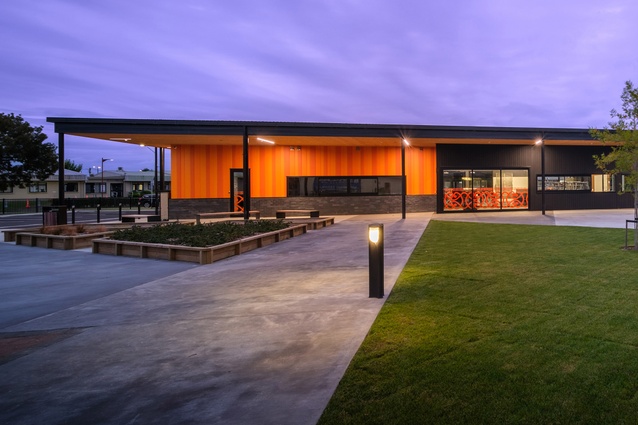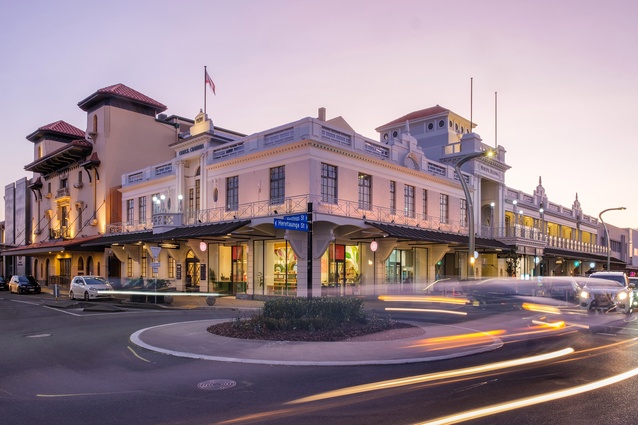Winners revealed: Gisborne and Hawke’s Bay Architecture Awards 2024
Nineteen projects were recognised in the 2024 Te Kāhui Whaihanga New Zealand Institute of Architects Gisborne and Hawke’s Bay Awards on 14 June at the Heritage award-winning Toitoi Municipal Building, Hastings.
A world-first building, eight beautiful new homes and two groundbreaking educational facilities were among the 2024 winners.
The Education category included Heretaunga Intermediate School’s technology block, designed by DCA Architects of Transformation, and described by the jury as an “ingenious fusion of functionality and aesthetics. The design considers the environment as an extension of the learning space, facilitating interdisciplinary connections in science, woodworking, music, art, and culinary arts.”
In the same category, Te Whare Te Manukura, a take on a traditional wharenui — with carved maihi by Charles Paringatai and works by master carver Nathan Foote — was awarded. Designed by Atkinson Harwood Architecture, the Rudolph Steiner school building skillfully intertwines Steiner philosophy with the essence of te ao Māori and is described by the jury as “a beacon of cultural enrichment.”
“After everything we’ve been through in this region, it was uplifting to see so many high-quality projects and such positive design and building work happening in the region,” says jury convenor, Hawke’s Bay architect Ann Galloway. “Everywhere we visited we experienced buildings that have been transformed by the way the architects approached the design and location.”
A pint-sized example is the Small Project Architecture winner. The Windsor substation switchboard upgrade by Charissa Snijders pushes the boundaries of what a functional, utilitarian structure can be. It is relocatable, sustainable and has become the first infrastructure project in the world to receive Living Building Challenge Vs 4.0 Petal Certification.
In the housing category, extraordinary settings were met with stunning architectural responses. The winners include homes in rural, coastal and suburban locations, and one multi-unit community of 20 houses, St Aubyn Village Estate.
A jury of four judges — Christina van Bohemen of Sills van Bohemen, Pierre Du Toit of Fat Parrot Architecture and graduate architect Jess Stent — was convened by Galloway.
The winning projects are:
Housing
Black Beech House by Bonnifait + Associates Architects
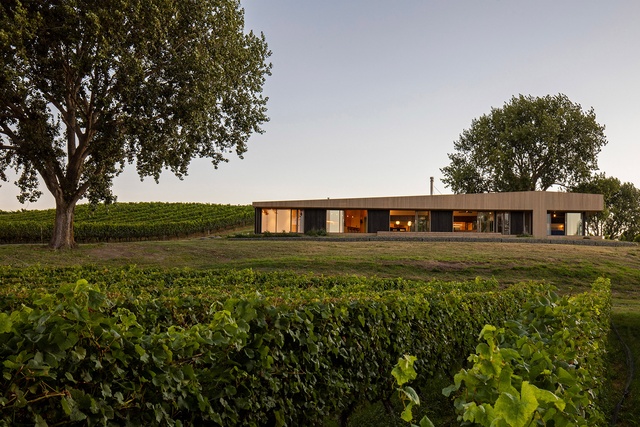
Positioned on a diagonal axis between two mature poplar trees, Black Beech house is carefully integrated into its vineyard setting. Beneath the roof canopy, spaces for living, sleeping and working are grouped around a central courtyard and linked by internal ‘streets’. With its open oculus, the courtyard provides a sheltered outdoor space for the clients who eschew bright sunshine yet desire connection with the outdoors. View shafts through the courtyard provide connectivity within the house and vistas of the landscape and ocean.
Resene Colour Award
Pops of vivid colour create an exciting sense of adventure and surprise in the interior, and contrast with the warmth of timber. Glimpses of colour across the internal courtyard create connection between the different spaces.
The Woolshed’s Sibling by Chloe Coles
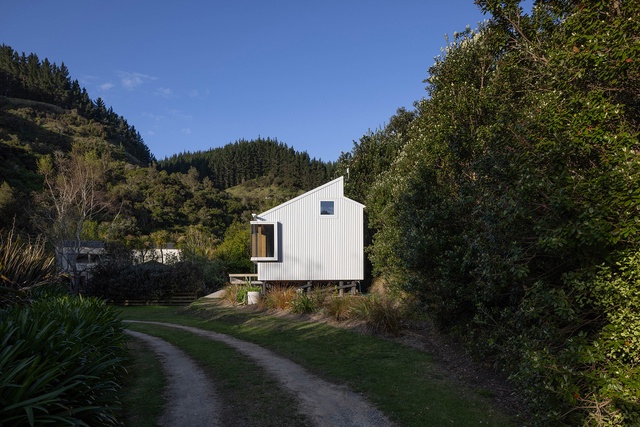
The ‘Woolshed’s Sibling’ embodies thoughtful architectural design and contextual sensitivity. Nestled within a picturesque setting and sitting proudly on a rise, it offers a welcoming arrival experience. The design seamlessly blends modern elements with the timeless appeal of the woolshed vernacular. Carefully selected materials and meticulous detailing enhance functionality and aesthetics while aligning with client preferences. Thoughtful sight lines create moments of reflection amid the lush native bush, evoking a strong sense of home. Embracing the essence of family, community and the Waipatiki lifestyle, the Woolshed’s Sibling offers a private and peaceful sanctuary with a surprising touch of architectural excitement around every corner.
Bone / Moroney House by Clarkson Architects
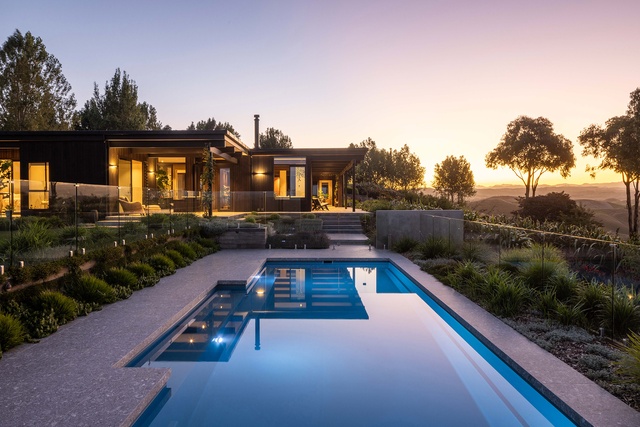
This modernist gem sits atop the Hawke’s Bay ridge, offering breathtaking vistas of the valley below. Its unassuming presence, deliberately low-slung, blends seamlessly with the landscape. A modest footprint for a family of five, the design ingeniously utilises features such as built-in seating to optimise space. Double glazing mitigates solar gain, while expansive verandahs invite winter sunlight. Oriented to harness maximum winter solar gain, this dwelling exemplifies architectural finesse, marrying functionality with the serene beauty of its rural setting.
Tākapu by Daniel Marshall Architect
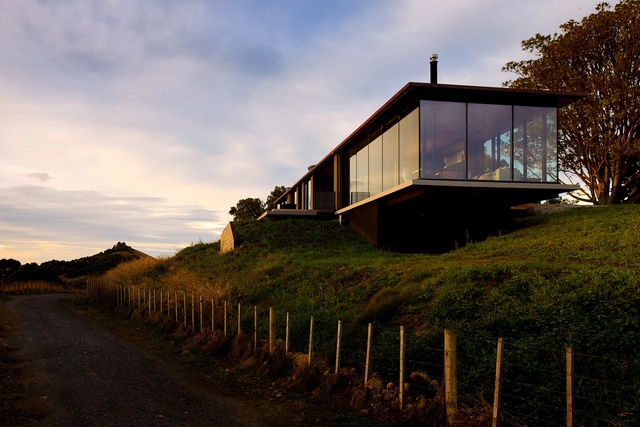
This award celebrates the seductive charm of a snug retreat perched on a precipice overlooking Ocean Beach. Intimate scale harmonises with the grandeur of the surroundings, offering a haven of tranquillity. Crafted with meticulous attention to detail, the dwelling boasts a seamless integration of materials, with glass, precast concrete, copper and cedar exuding elegance and durability. Every aspect of the design and execution is commendable, culminating in a residence that captures the essence of its site and elevates it to new heights of beauty and functionality.
Punakerua by Designgroup Stapleton Elliott and Crosson Architects in association
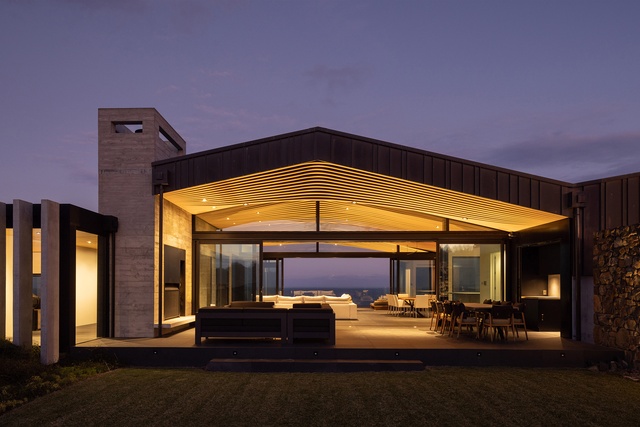
This large, well-appointed house sits discreetly in its ridge-line setting, that is successfully achieved through the articulation of form and material selection. Interior spaces provide occupants with a variety of rooms from which to contemplate the magnificent views beyond.
Haumoana House by Glamuzina Architects
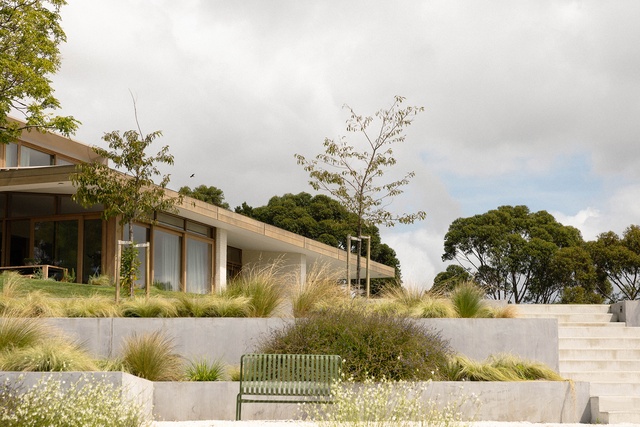
This beautiful and serene house is bedded into its site, anchored by solid organising walls. The central core contains the entry pivot point and there is a step in the section as you move through the house. The arrangement is formal, yet also relaxed as it opens on all sides in response to the landscape. The strong roof line asserts the dwelling’s sense of permanence within the site.
Beautifully detailed timber fenestrations and interior fittings work with the restrained, yet rich, material palette. Collaboration between architect, interior designer and landscape architect has resulted in a beautiful family home that will serve generations to come.
Mahia Retreat by Hoogerbrug Architects

Responding to the constraints of a long narrow site, this beguiling house settles into the landscape. Innovative detailing and meticulous craftsmanship give new personality to traditional materials. Timber weatherboards, concrete paving slabs and slatted timber not only reflect the bach tradition but create a sense of surprise and delight. A screen of mature pōhutukawa reveals the changing ocean view as you progress through the house. The plan and placement of openings create opportunities for both social gatherings and quiet reflection.
Westshore House by Three Sixty Architecture
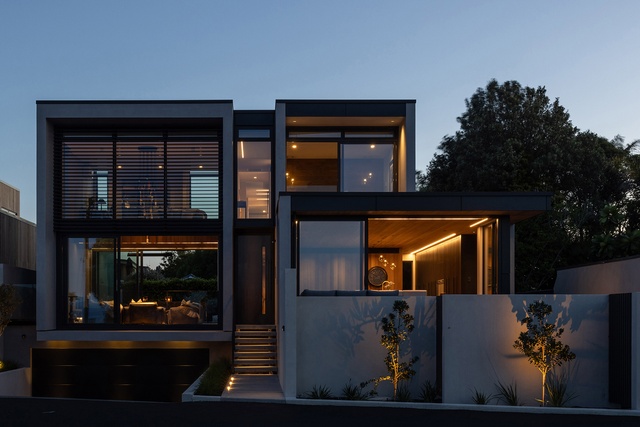
This dwelling exhibits exemplary execution and thoughtful design throughout. Meticulously detailed external elevations and material choices infuse the structure with texture, warmth and a welcoming ambience, evoking the essence of ‘home’. Spatial organisation is masterfully orchestrated, offering both clear, ordered spaces and a sense of expansive openness. By contrast, the intimate snug provides comfort and intimacy. Thoughtful design elements seamlessly balance privacy with engagement, harmonising with the beach context.
Housing - Multi Unit
St Aubyn Village Estate by Designgroup Stapleton Elliott
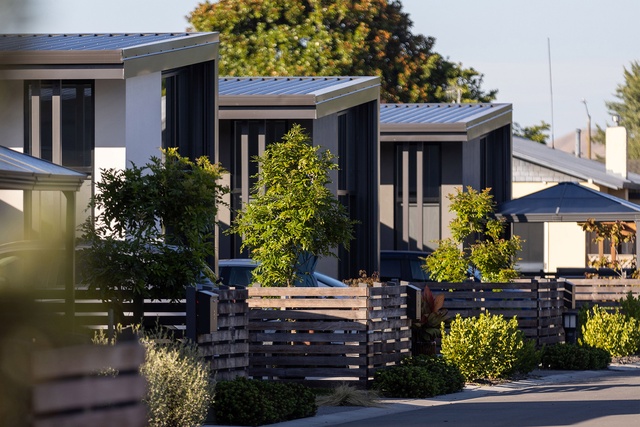
This project demonstrates how increased density can and should be accommodated within the existing suburban fabric. Twenty new modern houses are arranged to address both the street and internal lanes. Houses are light-filled and private, while allowing residents to engage with their neighbours as they desire. This objective is supported by the site design, landscaping and the provision of shared community facilities. The layout provides security and engagement without creating a gated community. This example of stitching a new community into an established neighbourhood should be further replicated.
Interior Architecture
Joll Road Laneways – Stage 2 Interiors by RTA Studio and AGD in association
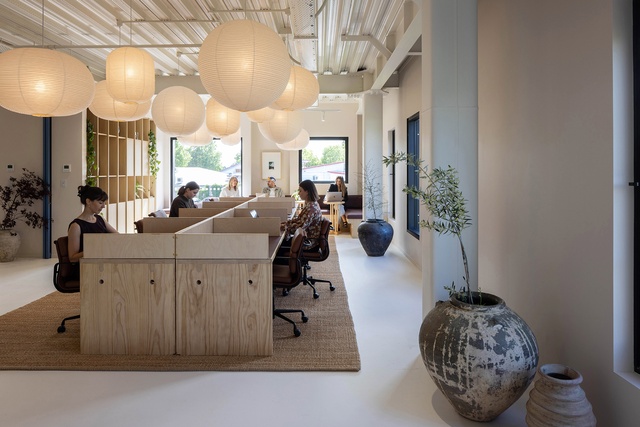
Eight interior fitouts reflect the tenants’ individual requirements, while expressing the structural elements of the building. A sense of spaciousness is achieved by maximising natural light and avoiding suspended ceilings where possible. The mix of open-plan offices and sliding partitions provides flexibility and opportunities for co-habitation of spaces. The tiny hospitality tenancy exudes vibrancy and energy, while softer materials and colours are introduced in the commercial tenancies to generate a sense of calmness and focus.
Resene Colour Award
Colour is used to bring cohesion and afford identity to individual spaces. The overall effect encourages a sense of calm and focus. By contrast, the tapas bar makes its own statement in vibrant colours inspired by the traditional colours of Colombia, home country of the bar owners.
Public Architecture
Kiwa Pools by Architecture HDT
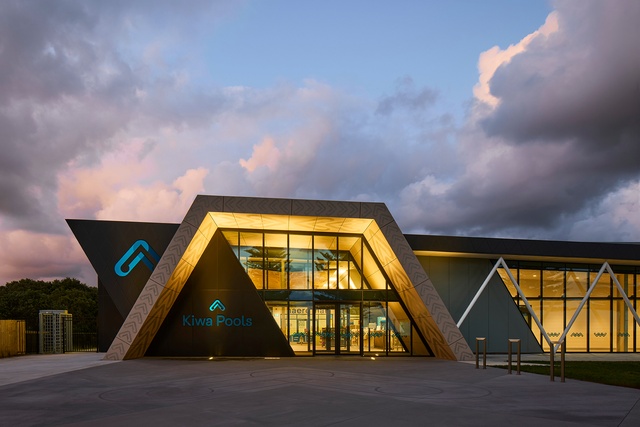
Aptly named after the original settler of Te Tairawhiti Gisborne, Kiwa Pools stands as a majestic presence in the landscape. Approached via an expansive forecourt, the building’s robust architectural forms proudly face the Pacific Ocean, extending a welcoming embrace. Intricately detailed and ingeniously designed, the front façade and interior finishes are adorned with the remarkable works of Sir Derek Lardelli, evoking a profound sense of tradition, connection and belonging.
A compelling narrative unfolds as visitors traverse through the mouth and into the belly of the building, cleverly laid out to guide their journey. Notably, the gallery of pipes and utilities left on display within the pool area depicts Te Manawa — the beating heart of the facility. This deliberate inclusion offers engaging interaction, bridging the gap between users and the otherwise concealed back-of-house areas. Consideration for future use is evident in the building’s meticulous planning, highlighted by the innovative movable floor pool. This project epitomises the culmination of the architect’s dedication, community collaboration and profound cultural resonance. Beyond its stature as a world-class recreation centre, Kiwa Pools emerges as a vibrant hub for community events, enriching the fabric of Gisborne’s urban landscape.
Waiohiki Marae Wharenui by Designgroup Stapleton Elliott
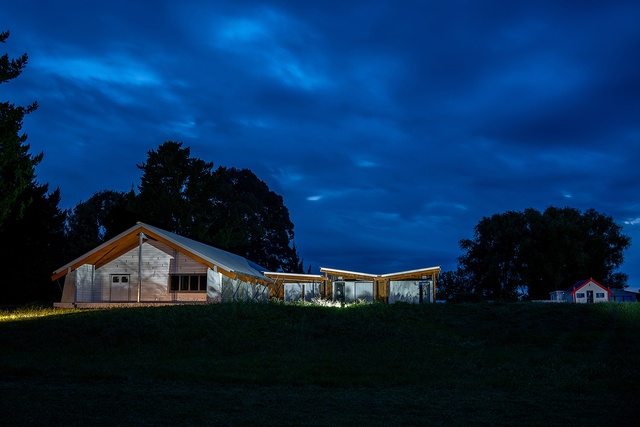
The re-development of the Waiōhiki Marae and Community Complex stands as testament to resilience and community spirit, earning a distinguished Architectural Award. Following the devastating fire that consumed the wharenui, this project emerges as a beacon of hope, embodying the aspirations of the Waiōhiki community and enriching the region’s cultural tapestry. Designed with a commitment to sustainability and cultural integrity, the complex serves as a hub for multiple activities while maintaining its spiritual significance and connection to the land. Hau Te Ananui’s design principles, blending tradition with innovation, ensure the marae remains a cherished gathering place. ‘By the people for the people’ symbolises strength, unity and renewal.
Small Project Architecture
Unison Networks Windsor Substation Upgrade by Charissa Snijders Architect
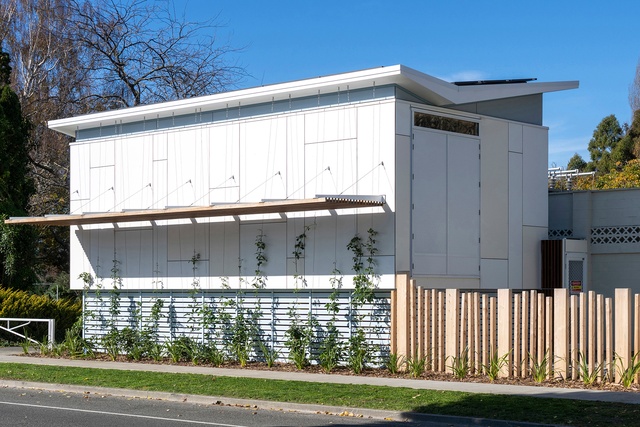
It is commendable to see a return to an understanding of, and need for, well-designed and attractive infrastructure. This switchboard building sits quietly on a suburban street, accommodating some serious electrical hardware and telling a story about sustainable buildings. It’s an example of quiet architecture that fulfils a very functional brief. Architectural expression is given to the building form and composition. Careful thought has been given to the proportions and layout of the simple façade design, including its subtle colours. The building’s apparent simplicity belies the complexities and challenges of creating a truly sustainable building, and in doing so achieving a Living Building Petal.
Resene Colour Award
At a time when strong contrasts and dark colours prevail, the building’s form is expressed by a restrained palette in keeping with its suburban setting. Soft grey is used to both anchor the building and allow the roof form to float, while subtle colour variations to cladding panels provide interest.
Commercial Architecture
Kaweka Hospital — Stage I by Architecture HDT Hawke’s Bay
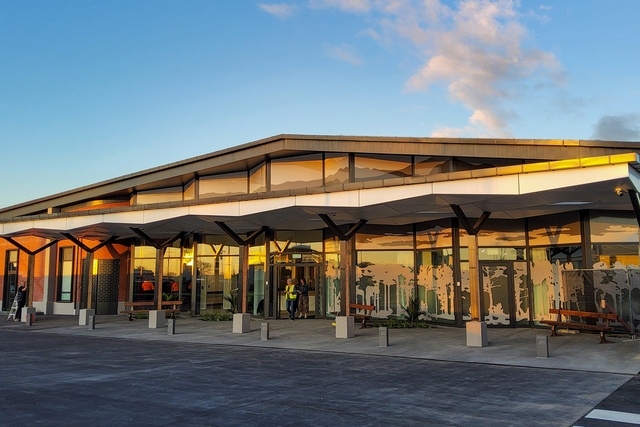
This new hospital has a strong and colourful presence in the suburban streetscape. Notwithstanding challenges posed by infrastructure, the building creates a well-defined edge. The roof form, textured brick façade, concrete pilasters, articulated openings and landscaping work together to present a building that contributes to a sense of urbanity and engagement with the streetscape. The entry canopy on the north façade is welcoming, as are the interiors. The narrative of connection with the Kaweka Ranges contextualises the building in its geographic location and is further developed both figuratively and literally in building elements and interiors. This seeks to be a well-considered place for healing in the community, accommodating the needs of staff and patients alike.
Tribune by RTA Studio
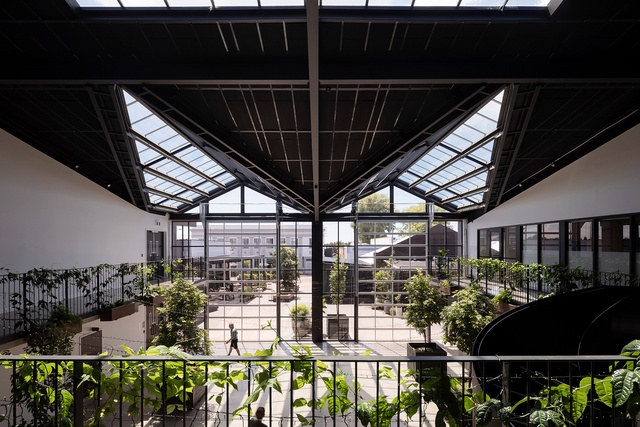
The development stands as an exemplar of architectural synthesis, blending heritage preservation, contemporary design, commercial constraints and community engagement. By incorporating elements of existing heritage architecture into the innovative design, Tribune pays homage to its surroundings while forging a new narrative of urban evolution. Robust multi-use buildings foster a vibrant and diverse community, promoting cross-pollination of users and activities. Attention to sight lines and connectivity draws people in, creating a dynamic hub of activity and commerce. With thought and detail in every aspect, the development represents architectural achievement and a promising future for the Hastings community.
Joll Road Laneways — Stage 2 by RTA Studio
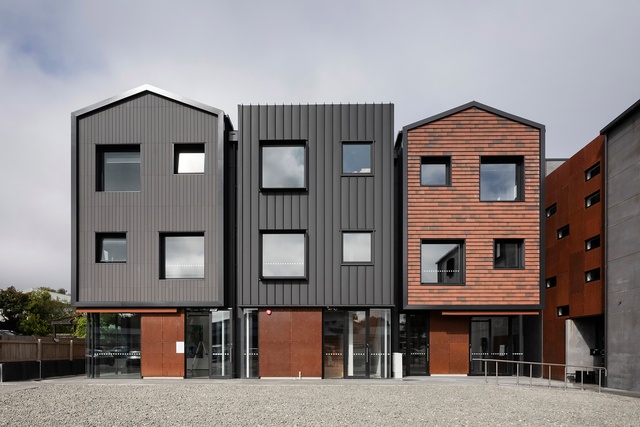
Stage two of a multi-stage mixed-use project, this building develops the scale and vocabulary established by its neighbour. A combination of simple forms, robust materials and well-articulated floor plates and elevations (including the roof) is employed effectively to introduce medium density into a predominantly single-storey village townscape. Ground-floor laneways create new connectivity and extend existing pedestrian shortcuts through the site, facilitating a sense of community and connection that is reflected in the collaborative vibe between the tenancies.
Education
Te Whare Te Manukura by Atkinson Harwood Architecture
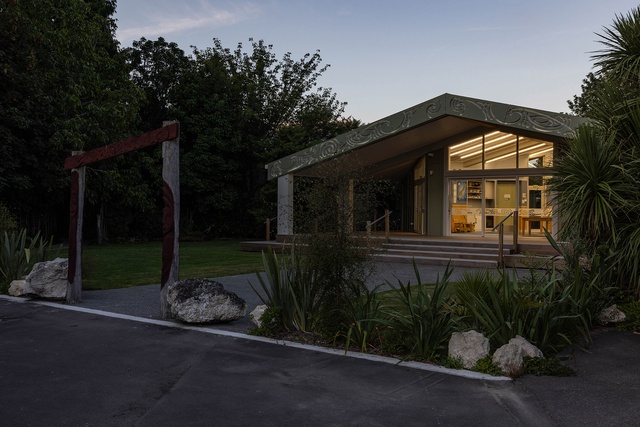
Te Whare Te Manukura skilfully intertwines Rudolf Steiner’s philosophy with the essence of te reo Māori. Crafted to provide an immersive environment for learning and practising te reo, the architect clearly understands the context. Well-sited and facing east, the building gracefully opens to the school campus, offering a sense of arrival while in harmony with the existing tree line. Embracing a new take on the traditional wharenui, commendation is given to the collaboration between architect and artists, notably the carved maihi by Charles Paringatai and works by master carver Nathan Foote. The timber mahua serves as a spacious and inviting area for performance, fostering community and cultural celebration. Carefully selected materials and colours are in complement with context. Natural light floods the interior to create a vibrant and engaging atmosphere conducive to learning and collaboration. Te Whare Te Manukura stands as a beacon of cultural enrichment within its school community.
Heretaunga Intermediate School by DCA Architects of Transformation
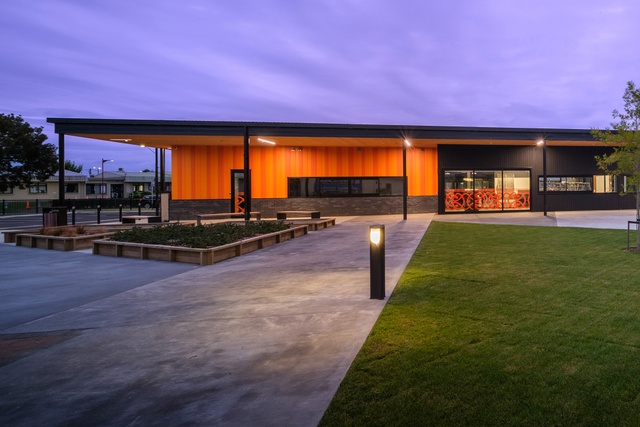
The innovative new technology block at Heretaunga Intermediate School captivates with its ingenious fusion of functionality and aesthetics. Cleverly sited, the building seamlessly integrates with the surrounding landscape, affording a strong axial connection between indoors and outdoors. The design considers the environment as an extension of the learning space, facilitating interdisciplinary connections in science, woodworking, music, art, and culinary arts. A continuous verandah envelops the building, offering solar and weather protection while encouraging outdoor engagement. The exterior’s vibrant colour scheme, mirroring hues within the educational hubs, elevates the structure’s visual appeal.
Resene Colour Award
The use of exterior colour to identify the four functions of this building is carried through to the interior as a means of way finding and identity.
Heritage
Toitoi Municipal Building, Hastings by Matthews & Matthews Architects
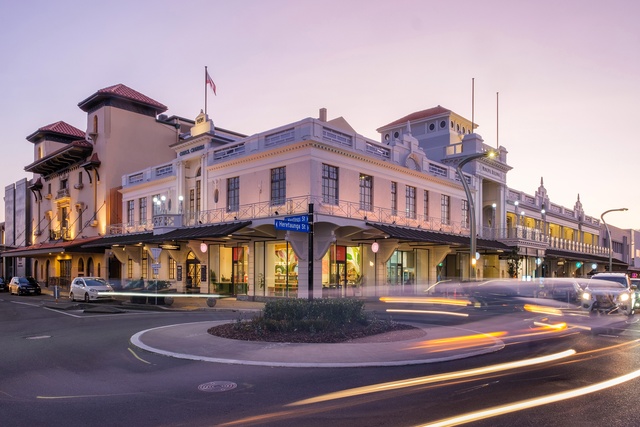
This seismic upgrading and redevelopment project has been honoured as an exemplary fusion of heritage preservation and seismic resilience. Celebrated as one of Hastings’ cherished landmarks, the project brilliantly reintegrates the building into the community fabric by revitalising its original essence while enhancing safety measures. Skilfully blending vital enhancements with the restoration of its architectural charm, the design invites natural light and fosters connection within the vibrant urban landscape. By reactivating pedestrian spaces and preserving local heritage, the project epitomises the commitment of Hastings District Council and community to their urban heritage.
The NZIA Architecture Awards programme is supported by Resene and APL.

